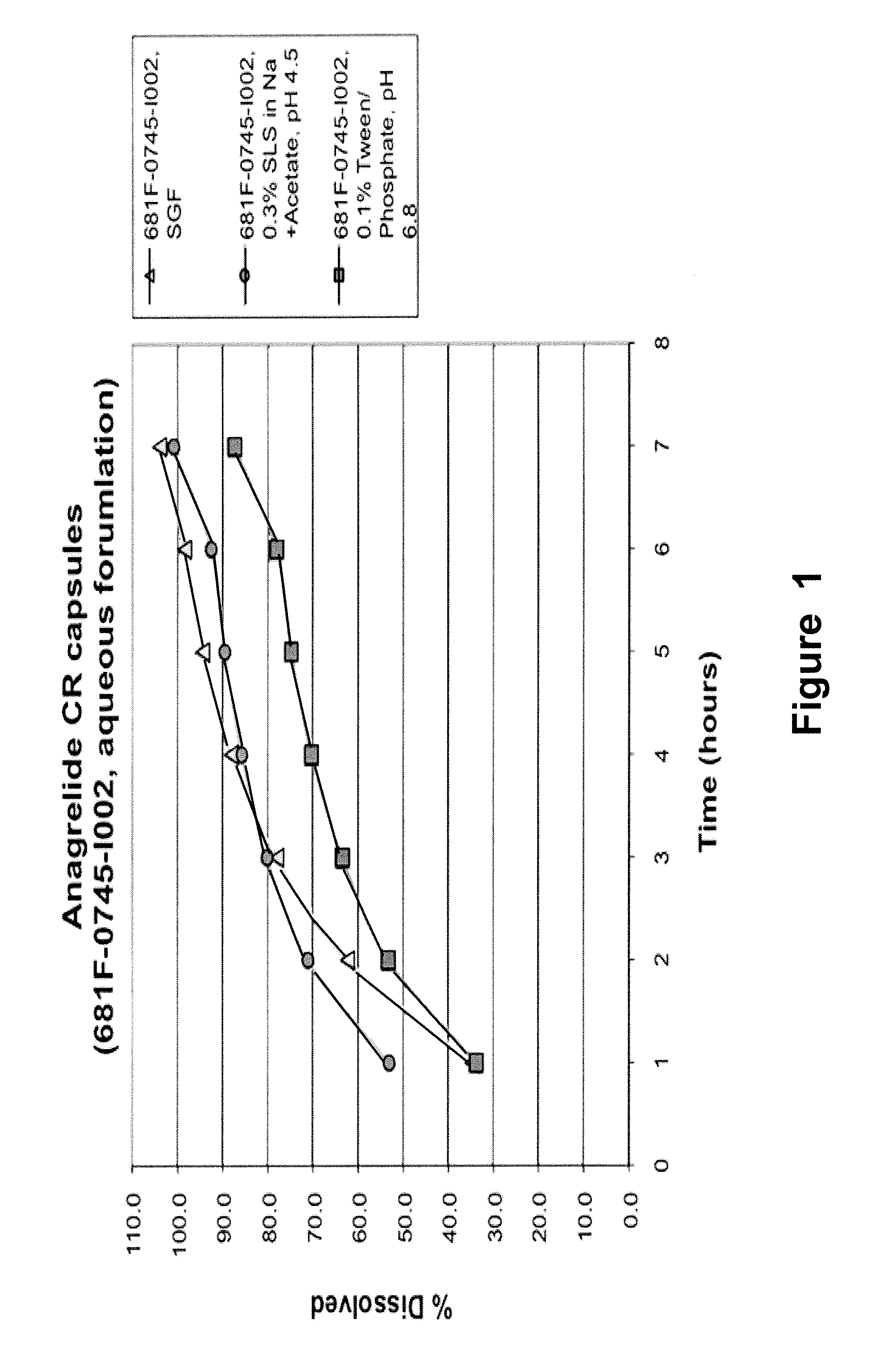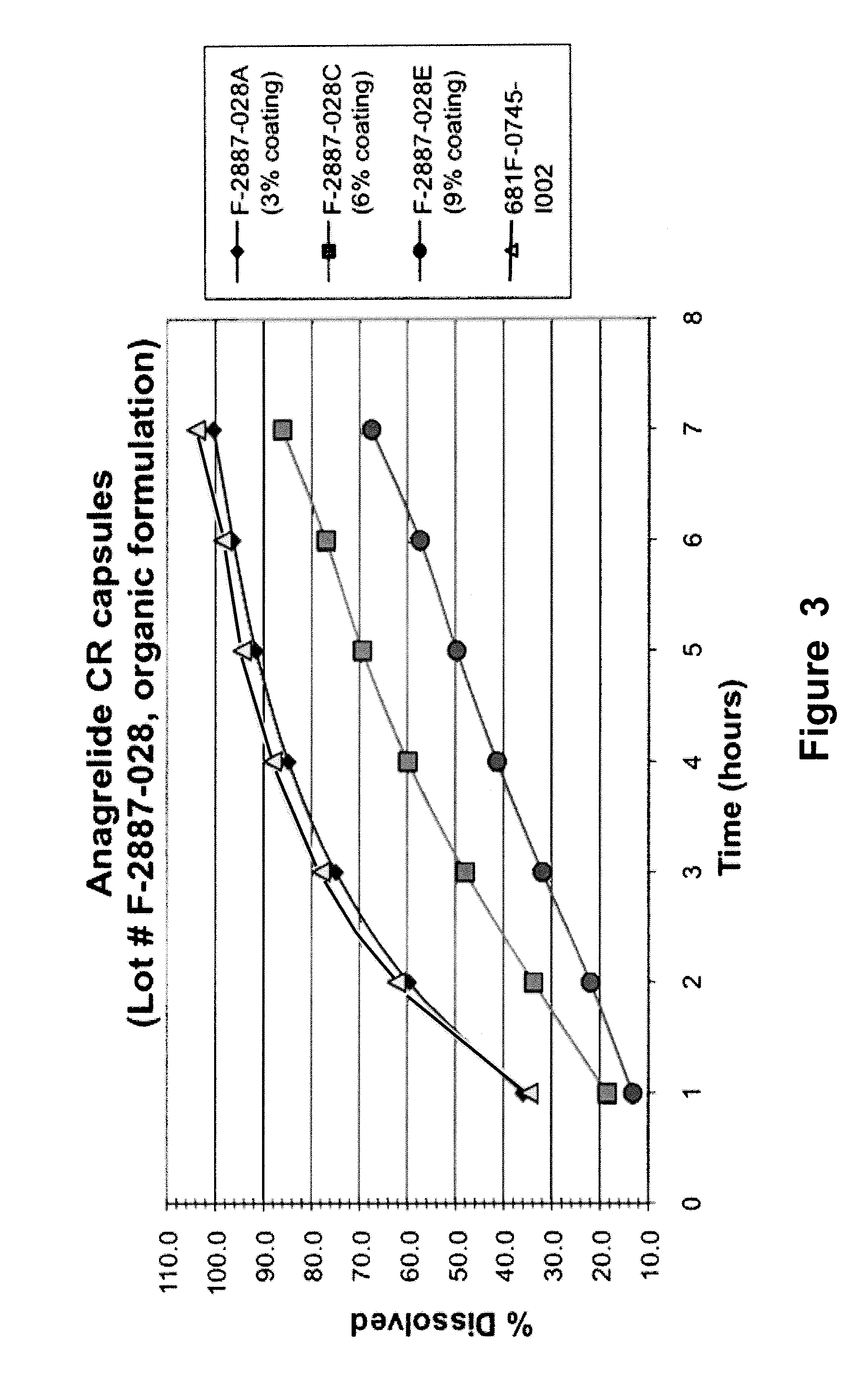Controlled release compositions of agents that reduce circulating levels of platelets and methods therefor
a technology of circulating platelets and compositions, which is applied in the direction of granular delivery, depsipeptides, peptide/protein ingredients, etc., can solve the problems of discontinuation of the drug as a therapeutic, elevated risk of thrombosis, and death of adults in western civilization, so as to reduce the number of circulating platelets, and reduce the circulating platelet count
- Summary
- Abstract
- Description
- Claims
- Application Information
AI Technical Summary
Benefits of technology
Problems solved by technology
Method used
Image
Examples
Embodiment Construction
[0088]A. Definitions
[0089]B. The Role of Platelets and Health
[0090]C. Platelet-related conditions and diseases[0091]1. Thrombotic events[0092]2. Vaso-occlusive events[0093]3. Vascular disease[0094]4. Myeloproliferative disorders[0095]a. Essential thrombocythemia (ET)[0096]b. Polycythemia vera (PV)[0097]c. Idiopathic myelofibrosis (IM)[0098]5. Other conditions
[0099]D. Anagrelide[0100]1. Chemistry[0101]2. Metabolites[0102]3. Derivatives and Analogs of Anagrelide[0103]4. Pharmacokinetic properties[0104]5. Mechanism of action
[0105]E. Compositions[0106]1. Form[0107]a. Cores[0108]b. Platelet number reducing agent[0109]c. Microparticles[0110]d. Coatings[0111]i. Optional preparatory coat[0112]ii. Substrate layer[0113]iii. Optional seal coat layer[0114]iv. Controlled release component[0115]v. Optional Finishing coat[0116]2. Pharmaceutical delivery forms[0117]a. Compositions for oral administration[0118]b. Compositions for other routes of administration
[0119]F. Methods of making coated partic...
PUM
| Property | Measurement | Unit |
|---|---|---|
| weight | aaaaa | aaaaa |
| weight | aaaaa | aaaaa |
| half life | aaaaa | aaaaa |
Abstract
Description
Claims
Application Information
 Login to View More
Login to View More - R&D
- Intellectual Property
- Life Sciences
- Materials
- Tech Scout
- Unparalleled Data Quality
- Higher Quality Content
- 60% Fewer Hallucinations
Browse by: Latest US Patents, China's latest patents, Technical Efficacy Thesaurus, Application Domain, Technology Topic, Popular Technical Reports.
© 2025 PatSnap. All rights reserved.Legal|Privacy policy|Modern Slavery Act Transparency Statement|Sitemap|About US| Contact US: help@patsnap.com



